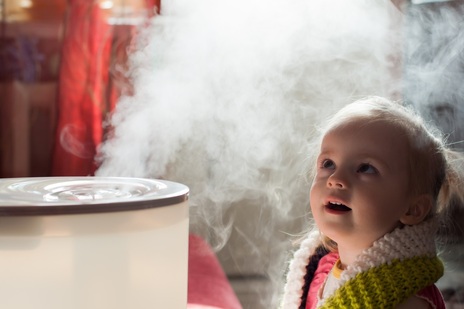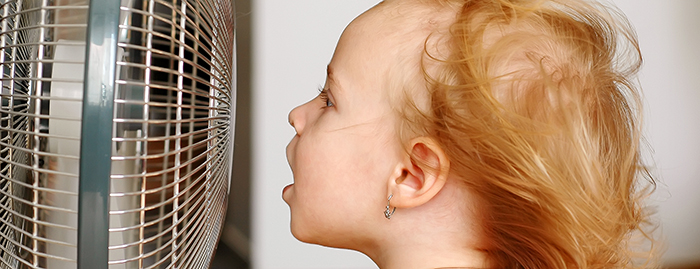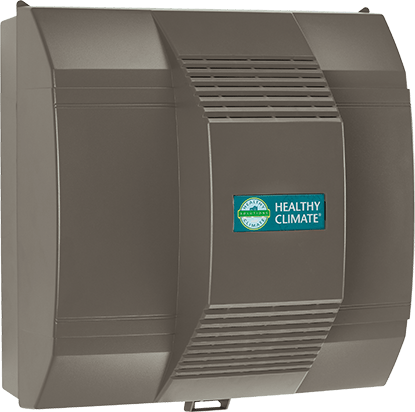Humidifiers vs Dehumidifiers: Which Is Best for Winter Use?

Keeping your home’s interior environment comfortable throughout the year can involve controlling a number of different factors. Maintaining your home’s temperature is obviously important, which means ensuring that your heating and cooling systems are properly maintained and functioning efficiently. However, one aspect that many people tend to ignore is the level of humidity inside their homes.
The level of humidity inside your home can play a major role in not only your comfort but also your health. This is precisely why many people choose to use humidifiers or dehumidifiers as these devices are extremely effective at maintaining constant humidity levels. Nonetheless, it can sometimes be difficult to decide which option is best. For this reason, we’ve put together a handy guide with what you need to know in order to keep your home’s humidity at the right levels throughout the winter.
Understanding the Difference Between Humidifiers and Dehumidifiers
Both humidifiers and dehumidifiers can be extremely useful in certain situations, but it is important to know when to use which device. Humidifiers work by heating up liquid water and thus converting it to vapor in order to increase humidity, whereas dehumidifiers produce the opposite effect. With a dehumidifier, air is drawn through a series of refrigerated coils. This causes the moisture in the air to condense into water and thus removes excess humidity.
How the Seasons Affect Humidity Levels
In order to determine whether you should use a humidifier or dehumidifier, it is first necessary to understand how seasonal weather can impact humidity levels. Near the equator, humidity levels stay mostly consistent throughout the year. However, the further north or south you move away from the equator, the more humidity levels fluctuate from season to season.
In North America, the summer months tend to be much moister and more humid whereas the winter air tends to be far drier. For this reason, many individuals rely on a humidifier during the fall and winter months to help combat this dryness. Alternatively, some people turn to dehumidifiers during the spring and summer to fight against the stale, moist air that occurs when humidity levels are high. This is especially true for people in the south and the midwest United States where humidity levels can skyrocket during the summer months.
How Humidity Can Affect Your Health and Home
By now, you may be wondering why monitoring and regulating your home’s humidity levels really matters. To answer that question, it is important to understand how humidity can affect both your health and your home.
In terms of health, excess humidity can often trigger asthma and allergies, which is why many people in O’Fallon, St. Louis, and other parts of Missouri often rely on dehumidifiers during the spring and summer.
On the other hand, the dry winter can also lead to or exacerbate any of the following issues:
- Sinus congestion brought on by a cold or other illness
- Coughing and chest congestion
- Nosebleeds
- Dry, itchy eyes
- Dry skin and chapped lips
These links between humidity and health illustrate why many people use dehumidifiers during the spring and summer and humidifiers during the winter, especially when fighting against a cold or other illness.
Humidity can also directly affect your home. Excessively dry air can potentially lead to cracking in sheetrock, wooden beams, and even leather furnishings. However, much bigger problems can arise when humidity levels get too high. Specifically, excess humidity can create the perfect conditions for potentially toxic mold to start growing inside your home, which may then lead to more serious health problems.
Checking the Humidity Level in Your Home
The humidity inside the average house tends to stay somewhere between 30% and 60% although the ideal range that people are most comfortable in is around 40-50% humidity. This means that you may want to consider using a humidifier if your home’s humidity level is below 30% or a dehumidifier if the level rises above 60%. Of course, the only way you can actually know what your home’s humidity level is to check it.

The simplest option is to buy a few humidity sensors and place them in various rooms around your home. Also known as a hygrometer, this type of basic humidity sensor doesn’t always provide the most accurate readings. However, they do have the advantage of being relatively cheap and readily available. In fact, you should be able to pick one up online or at any home improvement store for $10 to $20.
If your home has a smart thermostat, the chances are fairly good that you already have the ability to constantly monitor your home’s humidity level. The vast majority of smart thermostats come with a built-in humidity sensor, and even many of the more basic, non-smart programmable thermostats also include this function. If you have an existing smart home hub but your thermostat doesn’t include a humidity sensor, you also have the option to install separate smart humidity sensors and connect them to your hub.
These latter types of humidity sensors usually provide far more accurate readings than a basic hygrometer. Not only that, but they allow you to constantly monitor your home’s humidity levels even when you’re away from the house via your smartphone, computer, or any other connected device. This added level of convenience can make them well worth the extra cost. In fact, this is one of the many reasons that many HVAC experts recommend that homeowners upgrade to a smart thermostat. Moreover, a smart thermostat can be used in conjunction with a whole-home humidifier or dehumidifier to ensure that your home’s humidity levels stay constant.
Portable vs. Whole-home Humidifiers and Dehumidifiers: Which Is Better?
 When it comes to using a humidifier or dehumidifier, you basically have two options: portable units or whole-home units. Portable units have the advantage of being cheaper and allowing you to humidify or dehumidify the air in whatever room you need. For instance, many people use these portable devices in their bedrooms to ensure a more comfortable sleeping environment. However, these devices also require more maintenance and upkeep. Furthermore, you’ll need to purchase multiple units in order to maintain a consistent humidity level throughout your house.
When it comes to using a humidifier or dehumidifier, you basically have two options: portable units or whole-home units. Portable units have the advantage of being cheaper and allowing you to humidify or dehumidify the air in whatever room you need. For instance, many people use these portable devices in their bedrooms to ensure a more comfortable sleeping environment. However, these devices also require more maintenance and upkeep. Furthermore, you’ll need to purchase multiple units in order to maintain a consistent humidity level throughout your house.
For these reasons, many experts recommend having a whole-home humidifier or dehumidifier installed instead. These devices are installed as part of and work in conjunction with your heating and cooling system and are usually far more effective at maintaining consistent humidity levels when compared to portable units. This is because they work by constantly monitoring the temperature and humidity levels both inside and outside your home in order to make any necessary adjustments.
Keeping Your Home Comfortable Throughout the Year
Your home’s HVAC system is your primary tool to ensure your O’Fallon home stays comfortable throughout the year both in terms of temperature and humidity. Humidity sensors, smart or programmable thermostats, and whole-home humidifiers or dehumidifiers can work wonders to help combat the numerous problems brought on by excessively moist or dry air, and we can install, maintain, and service all of these. To learn more about these various options and how they can improve home comfort, give Hoff Heating & AC a call today.

 Call Us Today
Call Us Today
